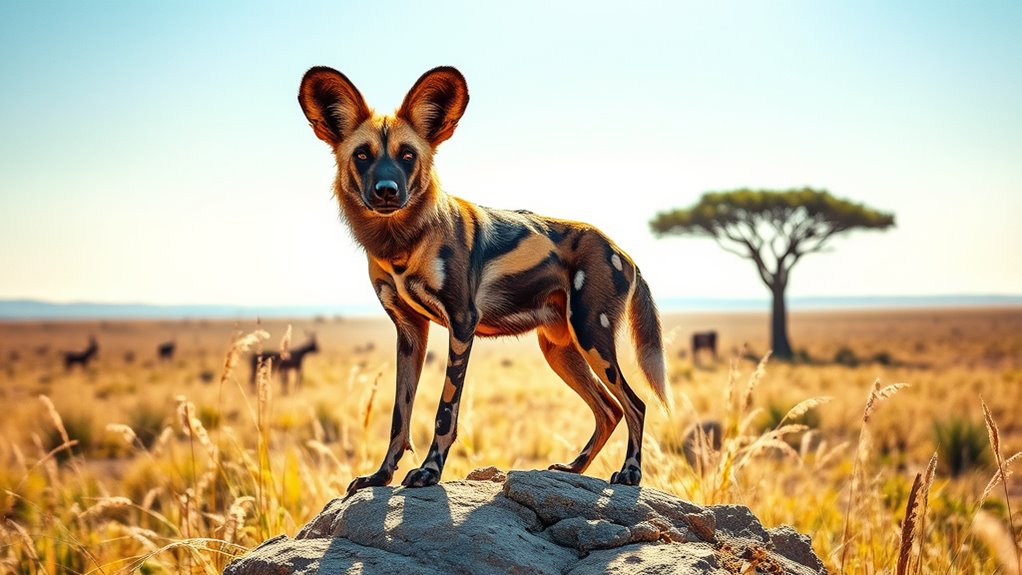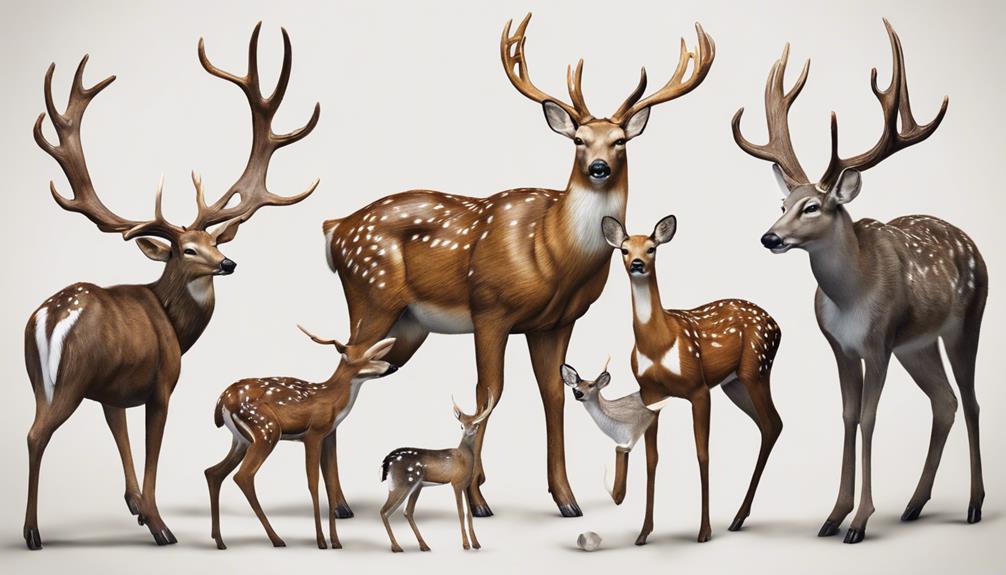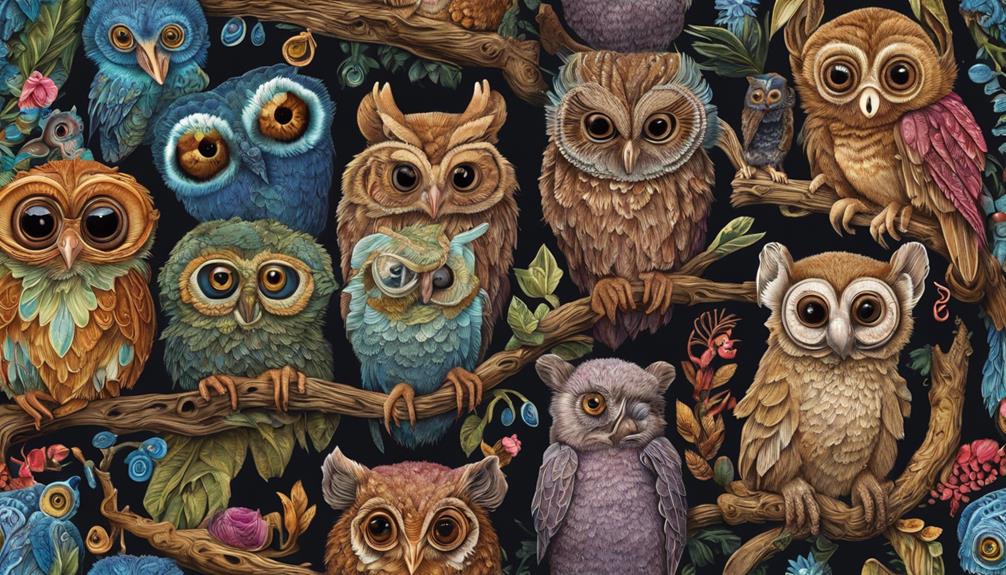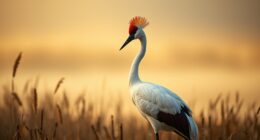The African wild dog, known for its mesmerizing mottled coat, is an extraordinary predator in the savanna. Its unique fur pattern helps it blend seamlessly into its environment, enhancing its hunting prowess. These dogs are masters of endurance hunting, using teamwork and communication to tire their prey over long distances. Their strong social bonds and cooperative behaviors contribute to their success as hunters and caregivers. If you explore further, you’ll discover even more fascinating details about these painted predators.
Key Takeaways
- African wild dogs are known for their striking mottled fur featuring yellow, black, brown, and white patches, enhancing their camouflage in the savanna.
- Their unique coat patterns allow for individual identification among pack members, which is crucial for social interactions.
- They employ endurance hunting strategies, using teamwork and vocalizations to coordinate successful chases over long distances.
- The social structure is led by a dominant breeding pair, emphasizing cooperation and mutual support among pack members.
- Their adaptability to various terrains and complex social dynamics give them an advantage over other predators like lions and hyenas.
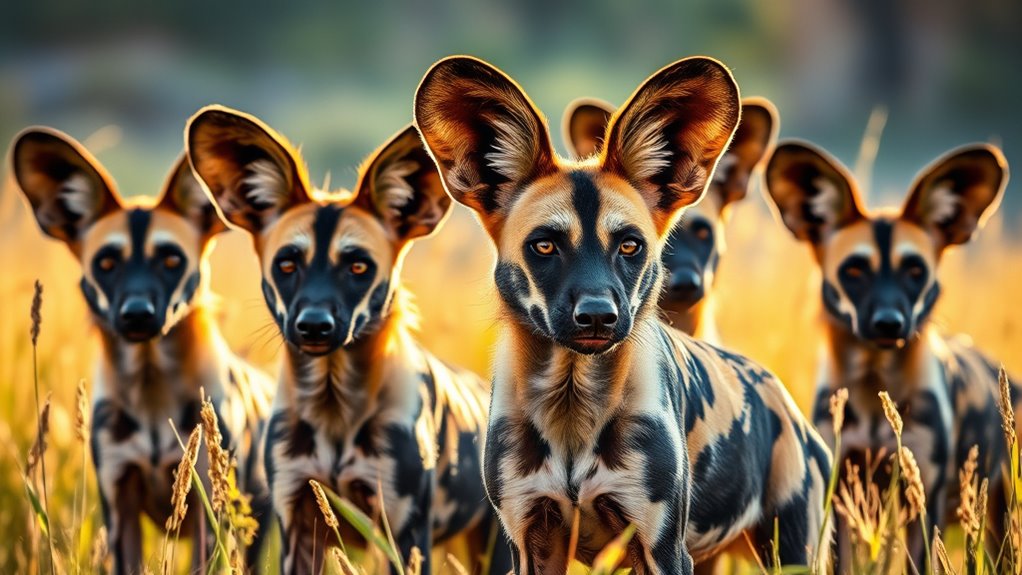
The African wild dog, known for its striking coat and social behavior, is one of the continent’s most fascinating predators. You’ll quickly notice its mottled fur, a unique blend of yellow, black, brown, and white patches that help it blend into the African savanna. But it’s not just their appearance that captures attention; it’s their remarkable hunting strategies and intricate social hierarchy that truly set them apart.
When you observe a pack of African wild dogs in action, you can’t help but be impressed by their teamwork. These dogs are masters of endurance hunting. Instead of relying on raw strength, they use their incredible stamina to tire out prey over long distances. You’ll often see them spread out in a fan formation, each dog playing an essential role in the chase. They coordinate seamlessly, communicating through vocalizations and body language. This collaborative effort not only increases their chances of a successful hunt but also reflects their strong social bonds.
The African wild dogs showcase remarkable teamwork and endurance, skillfully exhausting their prey through coordinated hunts.
Their social hierarchy is equally intriguing. Within the pack, you’ll notice a clear structure, often led by a dominant breeding pair. These leaders make indispensable decisions about where to hunt and when to rest, while the rest of the pack supports their leadership, ensuring that everyone contributes to the hunt. This hierarchy isn’t just about dominance; it’s about cooperation and mutual support. Each member has a role, whether it’s scouting for prey, helping to care for pups, or defending the territory. You might find it fascinating that the whole pack often participates in raising the young, ensuring the survival of future generations. Additionally, their ability to adapt to various terrains, much like hybrid bikes, showcases their versatility as a species in different environments.
As a result of their complex social dynamics, these dogs can achieve remarkable results during hunts. Their ability to communicate and strategize together gives them an edge over other predators, like lions and hyenas. They’re not only skilled hunters; they’re also incredibly social animals that thrive on cooperation. You’ll often see them engaging in playful interactions, strengthening the bonds that are so essential for their survival.
Frequently Asked Questions
What Do African Wild Dogs Eat Besides Large Prey?
African wild dogs have a diverse diet beyond large prey. They often hunt smaller animals like rodents, hares, and birds, showcasing their adaptable hunting strategies. By targeting various sizes of prey, they guarantee they have enough food to sustain their pack. This diet diversity allows them to thrive in different environments, maximizing their chances of survival. So, while they’re known for hunting larger animals, they’ve got plenty of options up their sleeves.
How Do African Wild Dogs Communicate With Each Other?
When wild dogs want to communicate, they cleverly combine vocal signals and body language. You’ll notice how they use a variety of sounds, from high-pitched whines to deep barks, creating a chorus that conveys emotions and intentions. Plus, their expressive postures—like wagging tails and playful leaps—further enhance their messages. You’ll find that these methods not only strengthen social bonds but also help coordinate hunting strategies among the pack.
What Is the Lifespan of an African Wild Dog in the Wild?
In the wild, an African wild dog typically lives around 10 to 12 years. Their lifespan is influenced by their social structure and the effectiveness of their hunting strategies. When you observe their packs, you’ll notice how they work together to hunt and protect each other, which can enhance survival. Strong social bonds and coordinated hunting not only help them secure food but also play a vital role in their longevity.
Are African Wild Dogs Endangered, and Why?
Yes, African wild dogs are endangered, primarily due to conservation challenges like habitat loss and human-wildlife conflict. As you learn more, you’ll see that their habitats are shrinking because of agricultural expansion and urban development. This loss restricts their roaming patterns and hunting grounds, making survival difficult. Conservation efforts focus on protecting their habitats and reducing conflicts with humans to help stabilize their populations and guarantee their future in the wild.
How Do African Wild Dogs Care for Their Young?
You’ll find that African wild dogs are remarkable caregivers. When puppies are born, the entire pack pitches in. They nurture the pups by bringing food back to the den, ensuring the little ones get the nutrition they need. You’ll often see the adults playing with them, teaching essential skills. This pack caregiving creates a strong bond and helps the young dogs learn survival tactics, enhancing their chances of thriving in the wild.
Conclusion
In the wild, the African wild dog isn’t just a predator; it’s a vibrant brushstroke on the canvas of nature, weaving tales of survival and teamwork. Imagine watching a pack expertly coordinate a hunt, their painted coats a blur of color against the savannah. Just like artists collaborating on a masterpiece, these dogs rely on each other for success. So, the next time you think of predators, remember the wild dog—a true embodiment of the beauty of cooperation in the animal kingdom.
